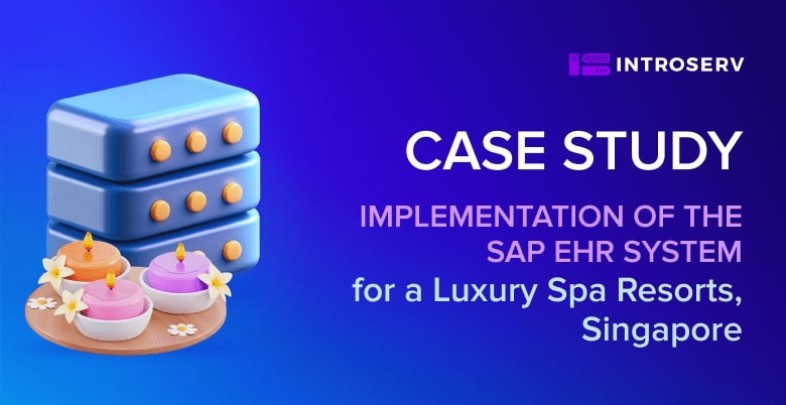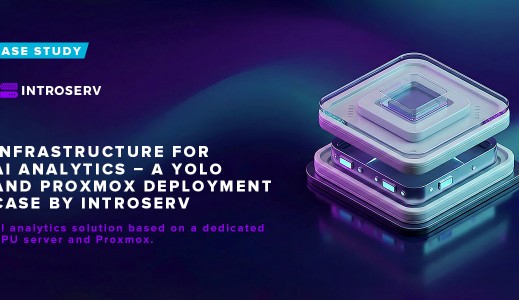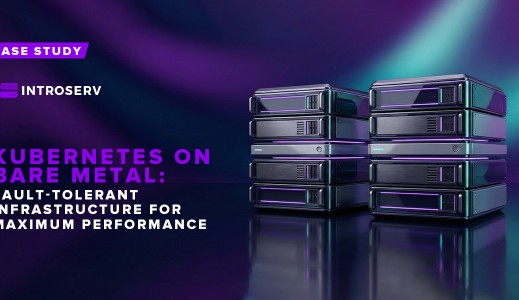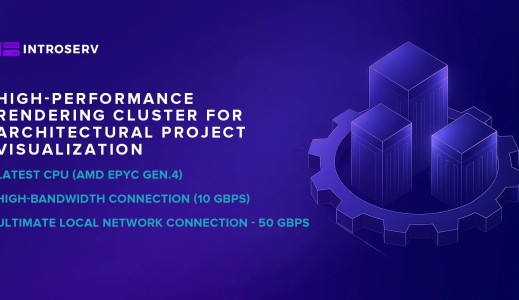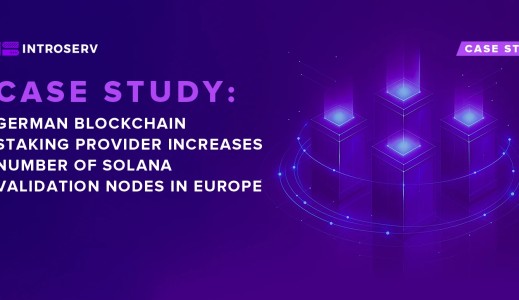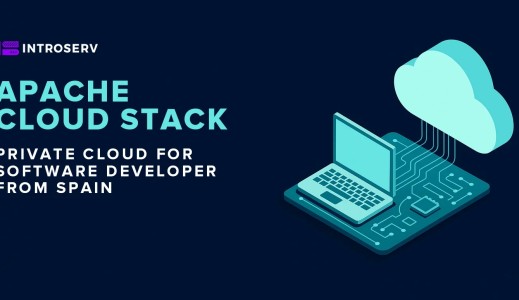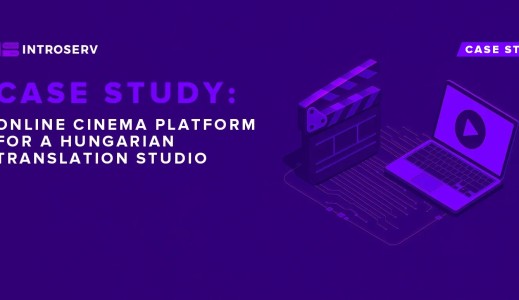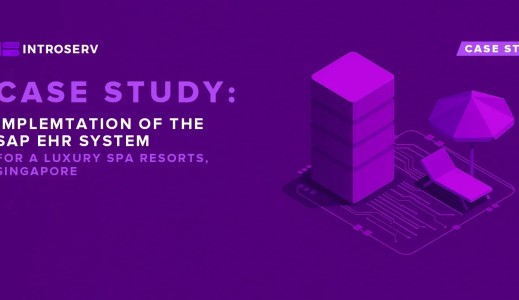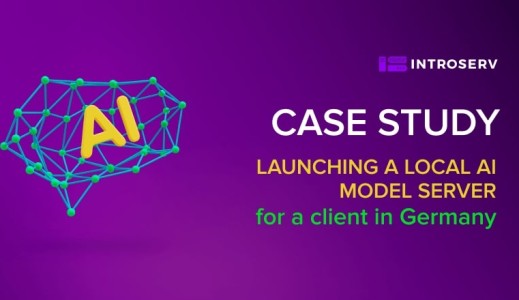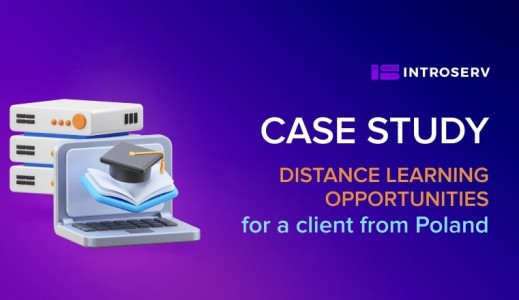Goals & Results

Сontext
Our client is the Luxury Spa Resort and Health SPA Complex in Singapore. This wasn’t just any ordinary spa; it was a renowned medical institution that catered to the needs of those seeking both relaxation and advanced healthcare. Nestled within its tranquil walls were state-of-the-art facilities offering a wide range of services, from specialised medical treatments to expert consultations.
But even with all its grandeur, the spa’s true mission was not just to pamper its guests, it aimed to revolutionise how healthcare was delivered. The leaders of the Luxury Spa Resort and Health SPA Complex envisioned a future where the complexities of management and patient care would be as seamless and calming as the spa’s serene atmosphere. To bring this vision to life, they embarked on an ambitious journey to automate their management and accounting processes, while also enhancing the way they interacted with patients.
At the heart of this transformation was a custom built SAP Electronic Health Record (EHR) system. This wasn’t just any system; it was a central hub, a digital vault that securely housed every patient’s information, medical history, and treatment records. This technological marvel allowed healthcare professionals to communicate and collaborate effortlessly, ensuring that every patient received the best possible care.
With the SAP EHR system in place, doctors could now track their patients’ progress with unprecedented efficiency. Gone were the days of cumbersome paperwork and delayed updates. Everything was available at the touch of a button, in real-time. This not only improved the quality of care but also streamlined documentation and billing processes, making the entire experience smoother for both patients and staff.

The Luxury Spa Resort and Health SPA Complex didn’t stop there. They knew that managing patient relationships was just as important as managing their health. They introduced a cutting-edge Customer Relationship Management (CRM) system. This powerful tool allowed healthcare professionals to manage and schedule appointments effortlessly and keep in close contact with their patients, ensuring that no detail was ever overlooked.
The spa’s choice of SAP for its enterprise resource planning (ERP) needs was no accident. Known as one of the greatest and most popular ERP systems in the world, SAP was the backbone of countless successful businesses. With its ability to synchronise data delivery in real-time across all departments made it invaluable, even though there were cheaper alternatives. The spa’s leadership understood that SAP’s extensive functionality and decades of business expertise would give them a competitive edge. Allowing them to streamline operations and maintain their status as a leader in both wellness and healthcare.
In this fusion of luxury and cutting-edge technology, the Luxury Spa Resort and Health SPA Complex became a place where modern healthcare met timeless relaxation. A place where patients could rest easy, knowing that they were in the hands of both skilled professionals and an advanced, automated system that cared for their well-being as much as the spa itself.
Problem
The client faced several important challenges that needed to be addressed:
1. Integrating the accounting system with software for registering settlement transactions (PRRO) and with a hardware access control system (ACS).
2. Connecting and setting up receipt printers with direct network access to a remote database server.
3. Implementing a digital tool for patient registration and prescription management .
4. Implementing an access control system to ensure security and control access to the clinic territory.
5. Managing accounting procedures in both offices and medical laboratories.
6. Managing hotel rooms for clients choosing residential accommodation packages.
By addressing these challenges, the client aimed to streamline operations, enhance efficiency, improve patient care, and maintain a secure environment for staff and clients.
Solution
To solve the client’s problems, the following strategy was developed and implemented:
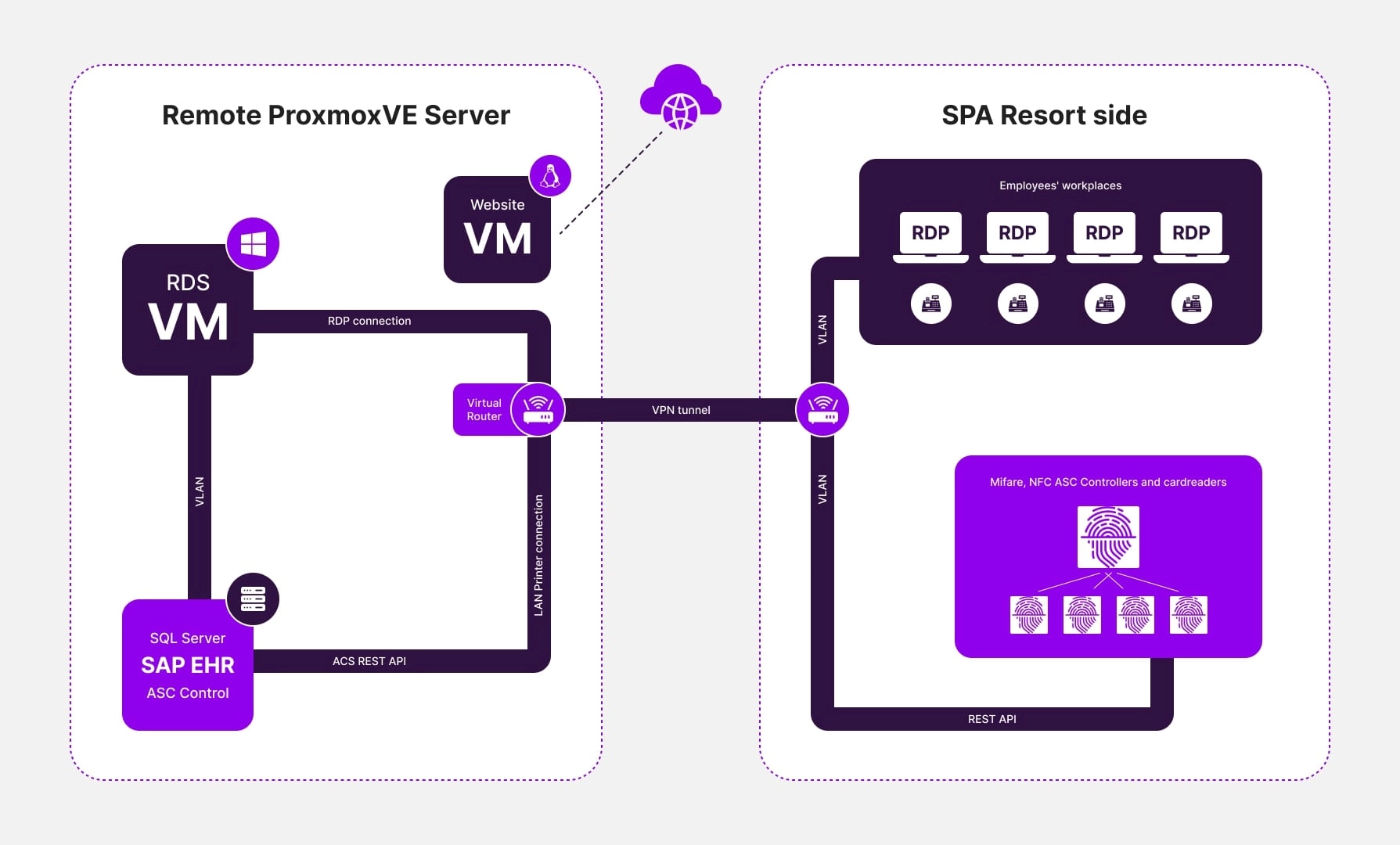
1. Selection and configuration of server hardware:
The first step in addressing the client's issues was to select the suitable server hardware. A thorough assessment was conducted to determine the ideal server configuration based on factors such as processing power, storage capacity, and memory requirements. After careful consideration, the most appropriate server hardware was chosen, ensuring it would be able to efficiently handle the client's workload and meet their expectations.
When it came to the choice of a proper server solution, the Dell PowerEdge R7525 server was chosen for this project due to its scalability and high system performance requirements. The server is equipped with two AMD EPYC 7551P processors, each featuring 32 cores, providing ample processing power to handle the demands of the project. Additionally, the server is equipped with 256 GB of RAM, providing ample memory for efficient system operation.
To enhance system performance, the server features two Samsung PM1733 NVMe drives of 2 TB each. NVMe drives offer significantly higher performance compared to traditional hard disk drives, making them ideal for high-performance applications. This setup allows for faster data transfers and faster access to data, resulting in improved server performance.
2. Setting up a network and connecting receipt printers:
The second step in resolving the client's problems was to establish a robust network and connect receipt printers. The client's existing network infrastructure was thoroughly evaluated to identify any potential bottlenecks or issues. If needed, adjustments were made to optimise connectivity and improve the overall network performance.
Once the network was configured, receipt printers were connected seamlessly. Proper cabling and connectivity were ensured, ensuring that all printers were properly connected to the server and accessible to authorised users. This step was crucial to ensure efficient printing of receipts and a seamless end-user experience.
Finally, to connect network receipt printers, a VPN tunnel was configured to a remote server and, through a software router, access to the RDP server was provided for the workplaces of reception administrators of the balneological and hotel departments.
3. Implementation of an access control system (ACS):
To address the client's security concerns, an access control system (ACS) was deployed. The ACS was designed to provide secure access to the server and resources for authorised users only. This included implementing user authentication and authorization mechanisms, such as biometric authentication or secure login credentials.
The ACS was extensively tested to ensure its functionality and reliability. Regular monitoring and maintenance were carried out to ensure the system remained secure and up-to-date. This step helped enhance the overall security posture of the client's network and protect sensitive data from unauthorised access.
The ACS equipment gained network access to a remote server using a VPN tunnel.
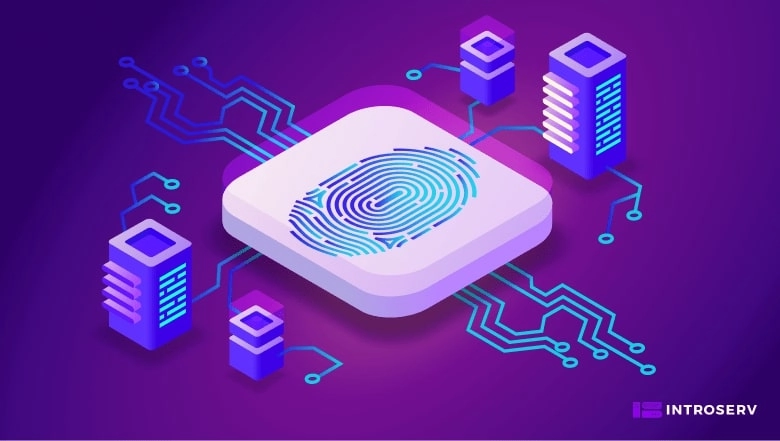
4. Development and implementation of a mobile application for patients:
To streamline the patient experience and improve efficiency, a mobile application was developed and implemented. The application was designed to provide patients with a convenient and user-friendly way to access healthcare services and manage their appointments.
The application was developed by an experienced team of developers, ensuring that it met the client's specific requirements and adhered to industry best practices. It included a user-friendly interface, robust functionality, and security measures to protect patient privacy.
The mobile application was thoroughly tested before deployment, ensuring smooth and glitch-free operation. Regular updates were made to address any technical issues and improve the overall user experience. This step helped enhance patient satisfaction and improve the overall efficiency of the client's healthcare services.
The development team gained access to the database through a web server located on a remote server in a customised VM running Linux.
To tackle the challenges faced by the client, a dynamic and comprehensive strategy was crafted and executed, turning vision into reality.
1. Powering the Future: Selection and Configuration of Server Hardware
The journey began with a mission to find the perfect server hardware, a foundation strong enough to support the client's ambitions. The team delved deep, assessing every technical nuance, from processing power to memory capacity. After meticulous analysis, they chose the Dell PowerEdge R7525. A powerhouse designed for scalability and unmatched performance.
This server wasn’t just another machine. It was equipped with dual AMD EPYC 7551P processors, boasting a formidable 32 cores each. With 256 GB of RAM fueling its operations, the server was primed to handle any task thrown its way. But that wasn’t all, the inclusion of two Samsung PM1733 NVMe drives, each with a capacity of 2 TB, ensured lightning-fast data transfers and access, propelling the system to new heights of efficiency and speed.
2. Seamless Connectivity: Setting Up the Network and Integrating Receipt Printers
Next, the focus shifted to creating a seamless and robust network infrastructure. The client's existing setup was analysed, identifying weak points that could hinder performance. With precision, the network was optimised, ensuring it could support the demands of the project.
Receipt printers were then integrated into this network with surgical precision. Proper cabling and connectivity ensured that every printer was linked perfectly, ready to deliver a flawless experience. To top it off, a VPN tunnel was established, providing secure access to a remote server, while a software router enabled RDP server access for the reception administrators in both the balneological and hotel departments.
3. Fortifying the Defences: Implementation of an Access Control System (ACS)
Security was a top priority, and the team responded by deploying a cutting edge Access Control System (ACS). This wasn’t just about locking doors, it was about creating a fortress of digital security. The ACS was designed with multiple layers of protection, from biometric authentication to secure login credentials, ensuring only authorised users could access sensitive information.
The system was rigorously tested, its defences constantly monitored and updated to withstand any threat. The ACS was also connected to the remote server via a VPN tunnel, adding another layer of security and ensuring that the client's data remained impenetrable.
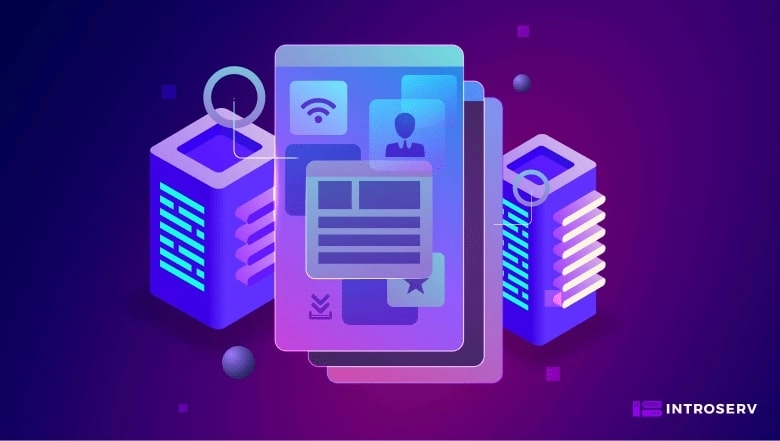
4. Transforming Patient Care: Development and Implementation of a Mobile Application
In the final phase, the focus shifted to enhancing the patient experience with a sleek, user-friendly mobile application. Developed by a team of seasoned experts, this app was crafted to be more than just functional, it was designed to be a gateway to the future of healthcare.
Patients could now effortlessly manage appointments and access services from the palm of their hand. The app, built on a secure foundation and tested to perfection, ensured privacy and ease of use. With regular updates, it evolved to meet the needs of users, boosting satisfaction and streamlining healthcare services.
The development team, working with precision and creativity, accessed the necessary databases through a web server housed in a remote, customised Linux virtual machine. This setup not only ensured robust performance but also laid the groundwork for continuous innovation and improvement.
In the end, the client’s challenges were met head-on with a strategy that didn’t just solve problems, it transformed the way they operated, setting a new standard for efficiency, security, and patient care.
Conclusion
The new infrastructure was a game changer, catapulting the client's system into a realm of unparalleled performance and reliability. Designed to handle the demands of numerous users simultaneously, it was a technological marvel, ensuring that every connection was as seamless as the last.
One of the standout features was the access control system, strategically placed on a remote server. This wasn’t just a practical solution, it was a masterstroke of security and efficiency. Following our expert recommendation, the client reserved dedicated Internet channels, ensuring that local equipment and workstations enjoyed uninterrupted access to critical databases and SAP configurations.
Together, the enhanced infrastructure, fortified by the remote access control system and dedicated Internet channels, transformed the client's operations. What was once a source of concern became a fortress of stability, providing a robust and secure foundation that not only met but exceeded the client's expectations. The implementation of these strategic upgrades didn’t just solve problems; it empowered the client with the confidence and capability to drive their business forward, knowing their system was built to withstand whatever challenges lay ahead.
